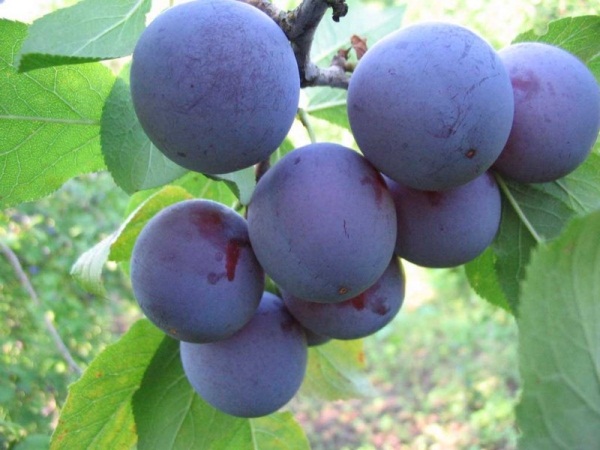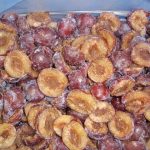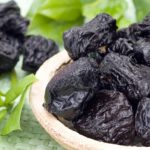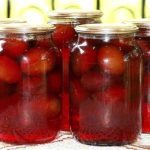Over the years, plum has been one of the most preferred crops by gardeners. Currently, there are many varieties of plums. One of them - Blue Plum has gained deserved popularity due to its advantages. The variety has a number of remarkable qualities, such as: high quality of fruits, self-fertility, winter hardiness. A description of this variety of plums can be found in this article.
Table of contents
Description of the variety Egg blue plum
The adult tree of the Blue Plum variety is of considerable size, it can grow up to six meters in height. The shape of the crown is oval.Sprawling foliage, medium density. The shoots are bare, painted in dark brown. Medium sized buds are located on the side of the shoot. Buds do not fit tightly to escape. The plant is durable and can live up to 30 years.
The fruit of the “Blue Plum” has an ovate, round shape, thanks to which the variety is also called “Egg blue”. The flesh of the fruit is juicy, colored yellow. Plum skin is thick, though thin. The berries are thick and smooth. The plum is painted blue and has a light white bloom. The stone is oval in shape, small in size and well separated from the pulp. The weight of the berry is about 35 grams. Blue plum fruits contain a lot of sugar and a low amount of acid. The fruits have a soft aroma.
The variety does not differ by fecundity, up to 12 kilograms are removed from one tree per season. Fruiting begins in the fifth or sixth year. There is no need for additional pollination, because this variety is of such quality as self-fertility. The plant tolerates frost well. and is able to withstand a decrease in temperature to 35 degrees without kidney damage.But during the heat of plum trees require additional moisture and watering.
Flowering begins in mid-May, and the fruits can begin to collect in mid-August, the peak of ripening is at the end of August.
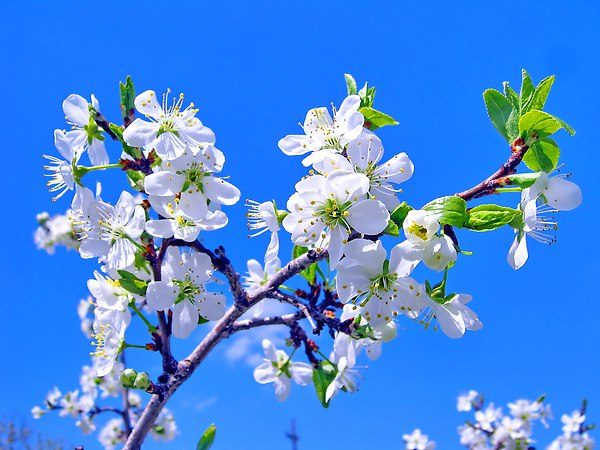
This variety is great for growing in its own garden plots, but in industrial cultivation it is not used.
The “blue plum” is common in the central part of Russia, the climate of this belt is ideal for this type of plum.
The advantages of the variety: self-fertility, good frost resistance, excellent fruit quality.
Disadvantages: high growth of trees, a tendency to klyasstoriozu.
History of
The variety "Blue Plum" was bred relatively recently. is he was formed as a result of the crossing of the old domestic variety "Skorospelka" with the Western European variety "Renklod Ullensa". The variety was bred in 1986 by Russian breeders at the All-Russian Breeding and Technical Institute of Horticulture.
Landing rules
The most suitable time for planting seedlings is early spring. It is necessary to plant a tree before the snow has completely melted, even before bud break.For landing fit well lit areas. All varieties of plums for successful growth require the following conditions:
- abundance of light;
- wind protection;
- sufficient watering;
- regular pruning;
- the presence of nearby different varieties of plums.
For a grade the loamy soil, with the lowered level of acidity will be idealwhich would contain enough calcium. Groundwater should be below the two-meter level.
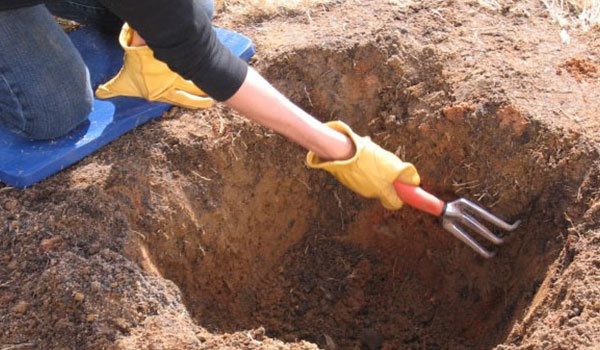
The soil for planting will need to prepare in the fall. It must be thoroughly dig and zazelkovat. In the same period, landing pits are being prepared. Landing pit sizes: 60 cm - depth, 80 cm - diameter. About half a kilogram of wood ash is laid on the bottom. Then the pit is filled with soil mixed with two buckets of compost, you can also add a pound of superphosphate.
The peg is deepened into the hole and the seedling is immersed, gradually sprinkling it with soil and tamping it down. Above the ground, at a level of about 4 cm, the root neck is left. The tree is loosely fixed to the peg, around it form a watering hole. Having planted a sapling, it is poured abundantly with water. The soil around the trunk must be dried with dry peat.
Plant care
One year after planting, you will need to feed the tree. This procedure is carried out twice: at the beginning of June and at the end of the month. Nitrogen fertilizers are taken as top dressing..
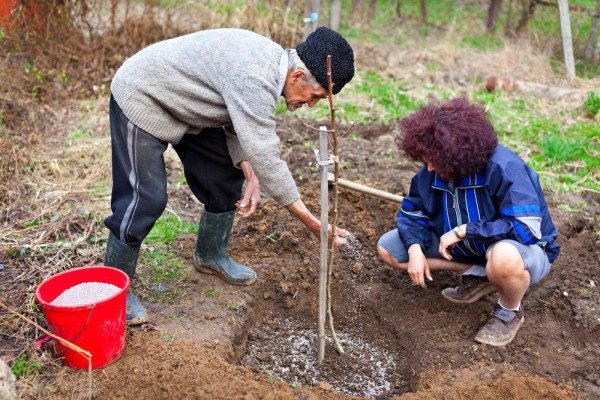
The next feeding should be scheduled for the third and fourth year. It is carried out three times in one season:
- May feeding: a solution of urea - 3 tbsp. on the bucket.
- June feeding: Nitrophoska - 3 tbsp. on the bucket.
- August feeding: superphosphate and potassium sulfate - in the same volumes.
For one plant you need to prepare 20 liters of fertilizer.
In the fifth year, additional feeding is carried out three times:
- before flowering;
- during fruit ripening;
- after picking berries.
You will also need to regularly carry out the following procedures:
- weeding;
- watering;
- loosening;
- mulching.
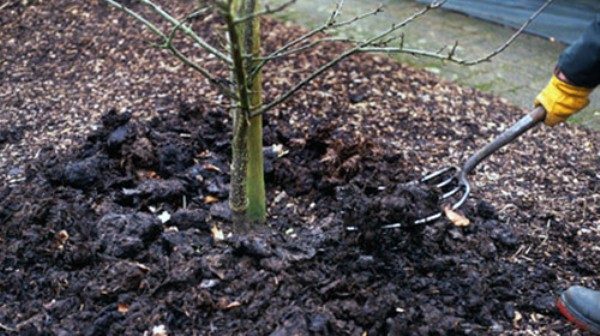
Primary pruning is done immediately after landing. As a result, no more than ten main branches should remain. This will be the base of the plum crown.
In the spring produce pruning of sick, frozen, damaged branches. Remove excess shoots and root shoots. Gains need to be shortened slightly.
The grade "Blue plum" differs in frost resistance. therefore special preparation for the winter is not required. To protect the trunk from rodents, it is wrapped with a polymer mesh. But the heat of plum trees is transferred very badly, it is very important in hot weather to provide the plant with enough moisture. At this time, the tree needs abundant watering.
Diseases and pests
The variety "Blue plum" is characterized by susceptibility to such a disease as klyastospiroz. This disease affects mainly the leaves of the plant, it is manifested by red spots, in place of which, after some time, holes appear. This is a type of fungal disease. It can extend not only to the leaves, but also to young green shoots. The disease has a rapid spread. She instantly moves from one plant to another.
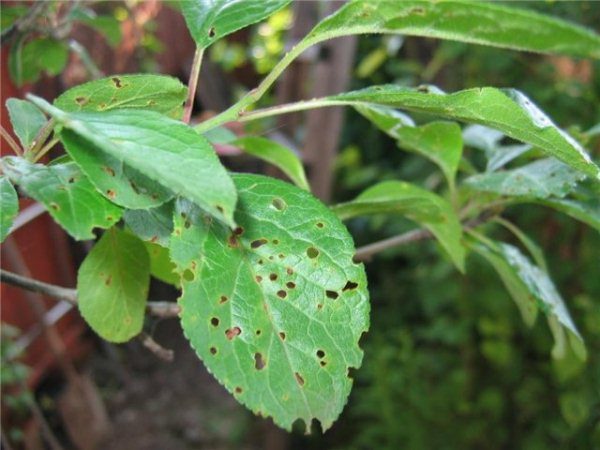
To combat the disease using fungicides. At the same time periodically it is required to change means.
Moth - another problem that may occur in plants. It can cause significant damage and reduce the yield of plums. The moths gnaw the ovaries, and they also feed on ripe fruits. Danger is represented both by caterpillars and adult insects.
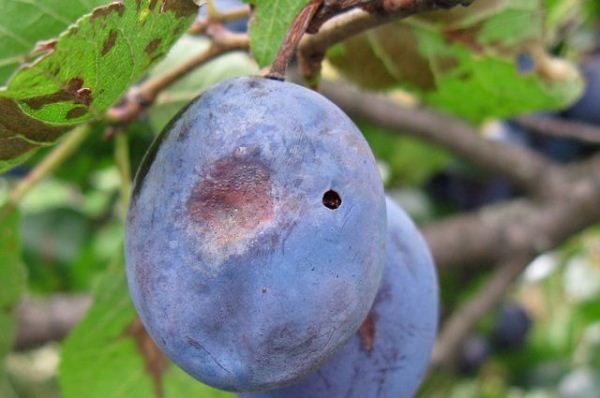
To protect the tree from harm, it is necessary to scrape off the old bark from the surface of the trunk and branches.. If there are a lot of insects, special treatment will be required.
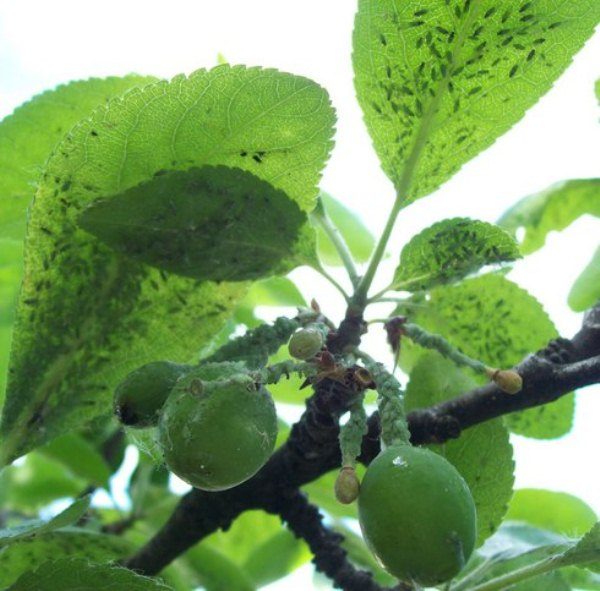
The enemy of the plant is aphid. These insects are active in the spring. At this time, they begin to settle in huge groups on the inside of the sheet. Treatment from these harmful insects is carried out in the evening or in the morning, in calm weather. The procedure is done six weeks before the ripening of the crop. For these purposes, you can use the chemical agent "Intra-Vir". This drug is very effective in combating aphids.
Often the appearance of aphids on the plum suggests that the plant receives an insufficient amount of mineral fertilizers, namely, phosphorus. therefore with an abundance of aphid the tree can be processed. This nitrogen-phosphate fertilizer can be sent directly to aphids. Under the roots of the tree will need to pour ash and dig. This procedure will help to cope with aphids.
Besides, plum slightly affected by fruit rot.
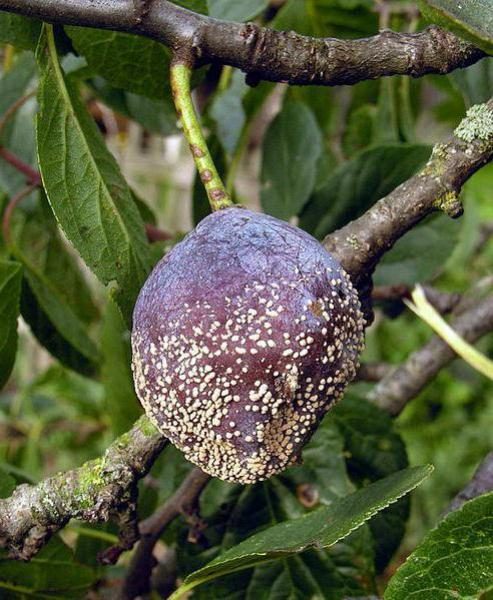
Crop storage
For storage, only intact whole fruits are selected. It is important that the drain is done naturally. Unripe fruits can ripen in the cold, but in this case they lose their taste, the quality of the pulp will also suffer.
Fresh plums are stored for a short time, not more than a week. Therefore, For long-term storage of the harvested harvest, the following methods are used:
- freezing;
- drying;
- preservation.
- Frozen Plum Halves
- Dried plums, prunes
- Canned plums
"Blue plum" is one of the best domestic varieties. Plum trees of this variety are frost resistant. One of the important advantages of the variety is self-fertility.. These characteristics made the variety very popular.Many gardeners choose it for cultivation in their own garden.
